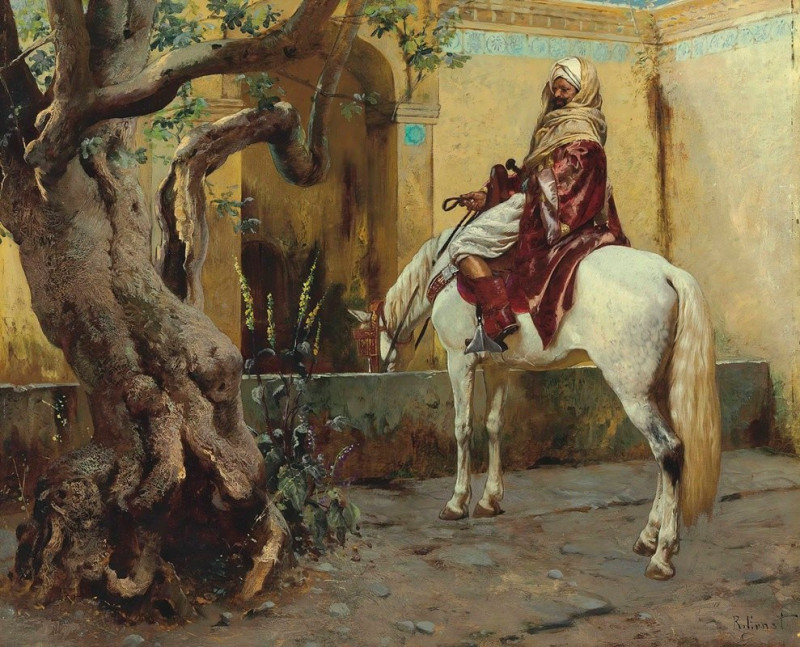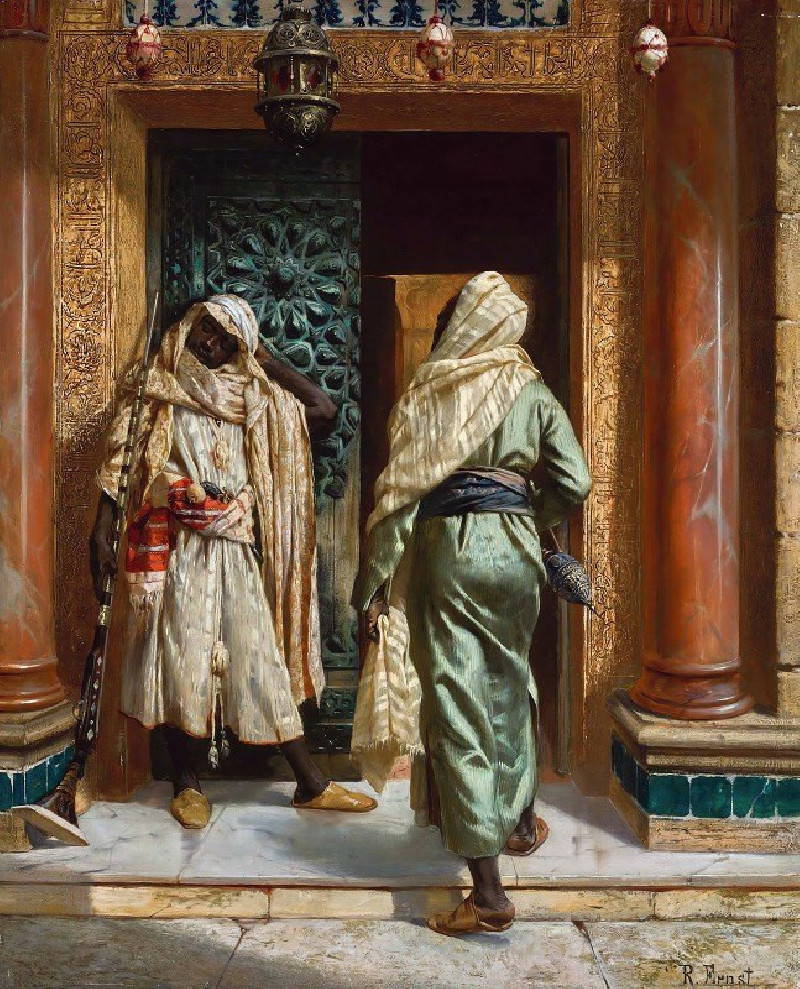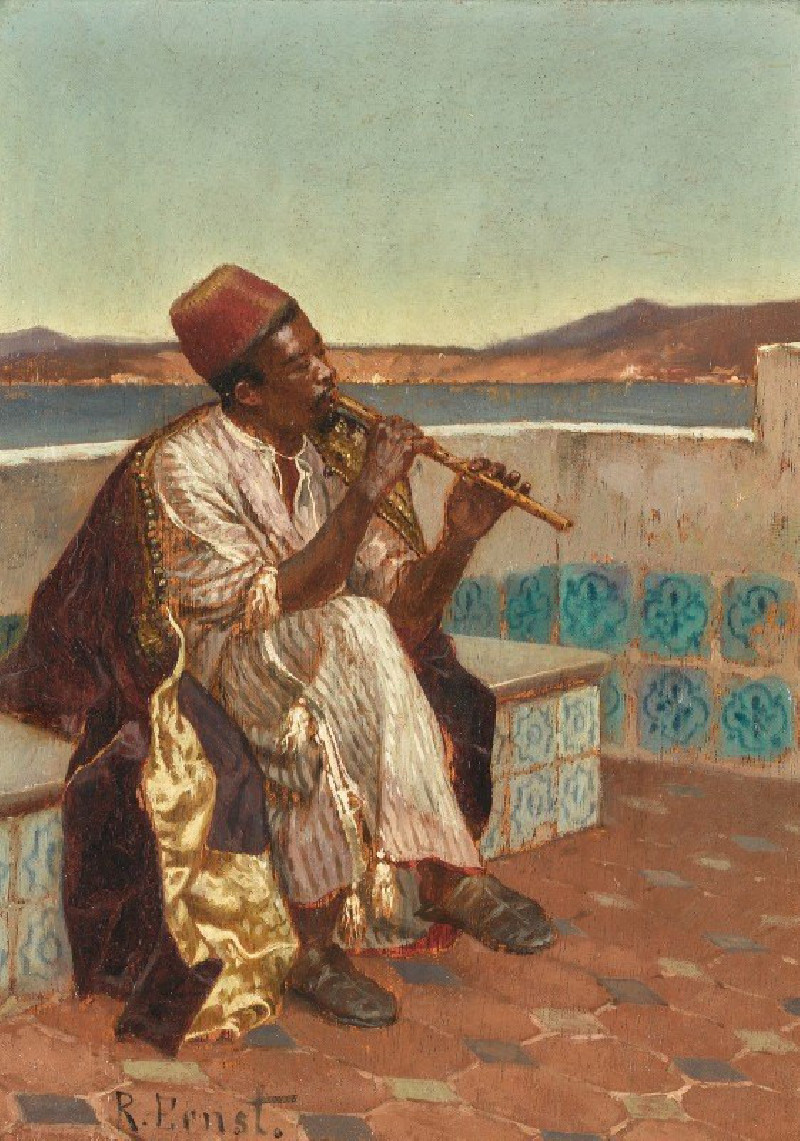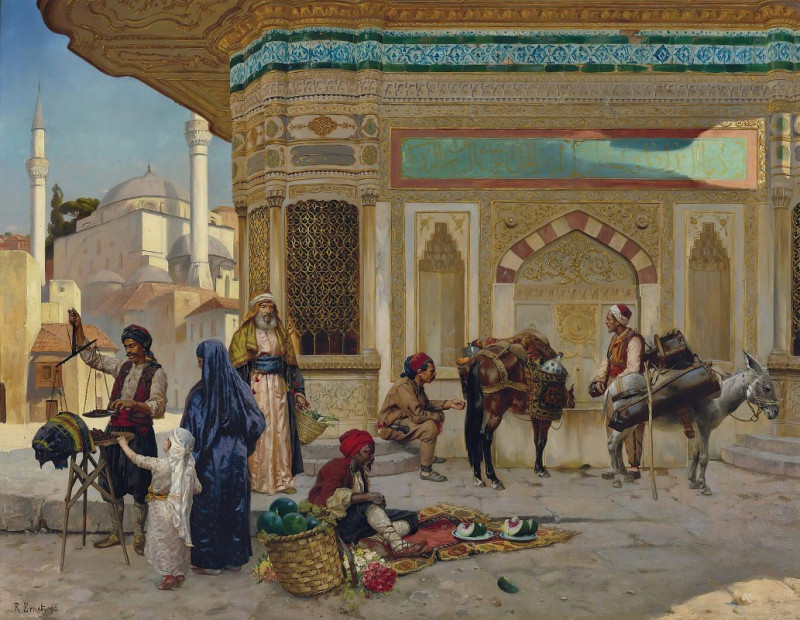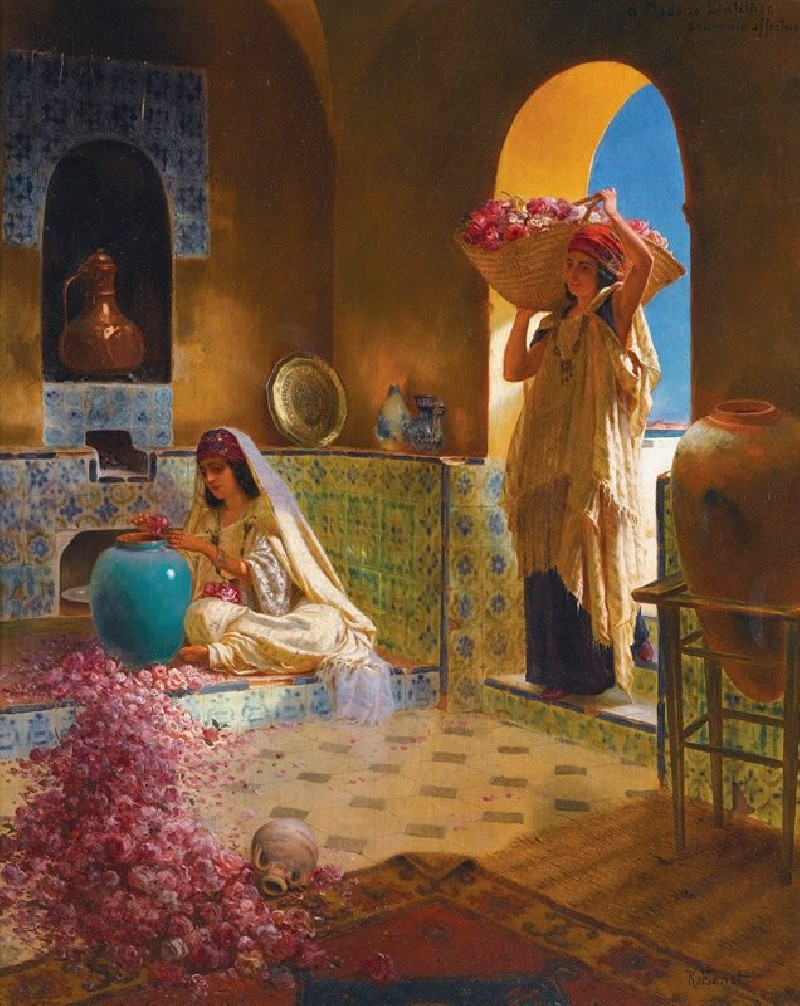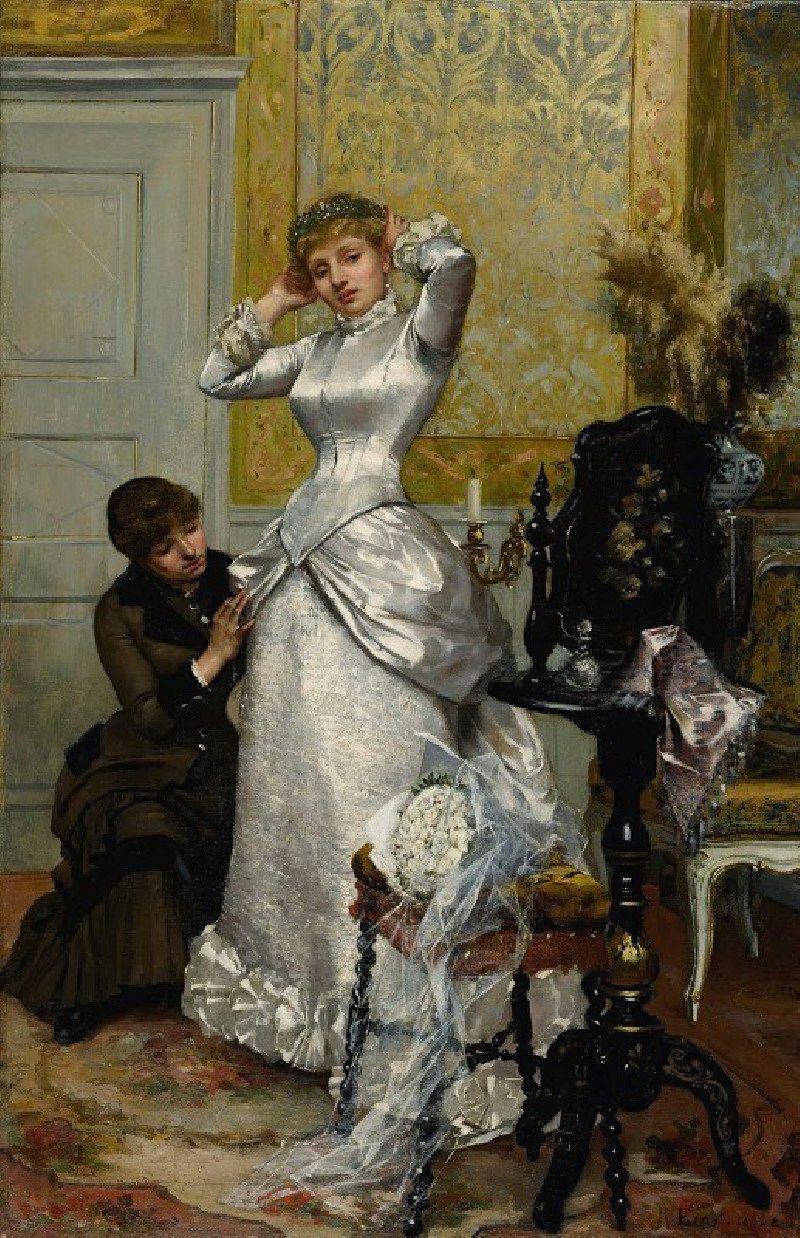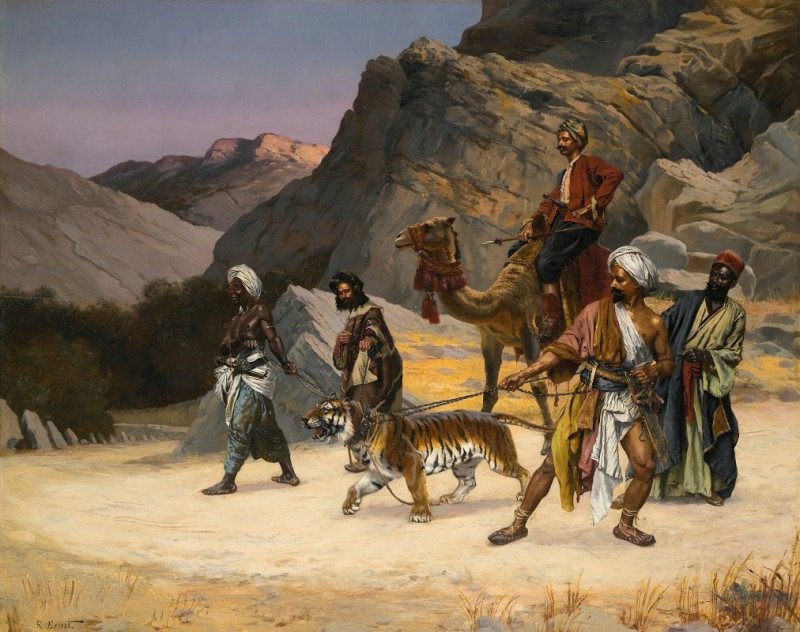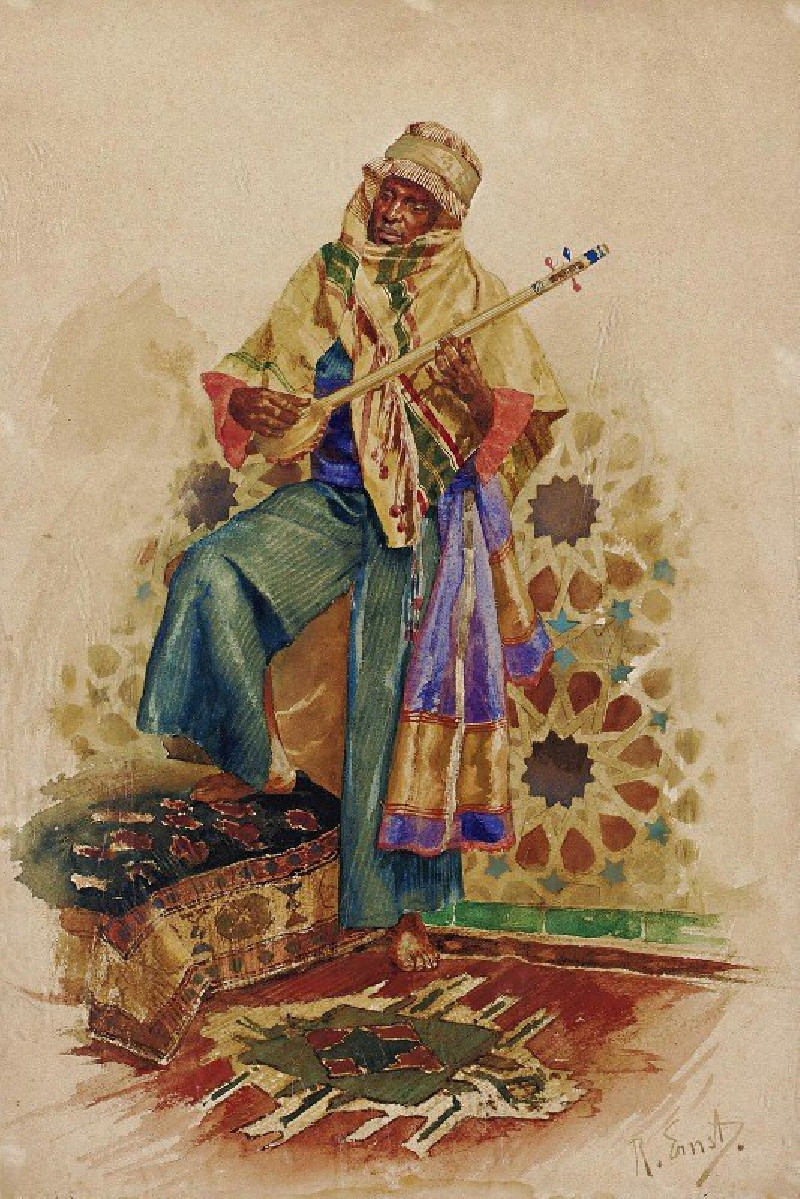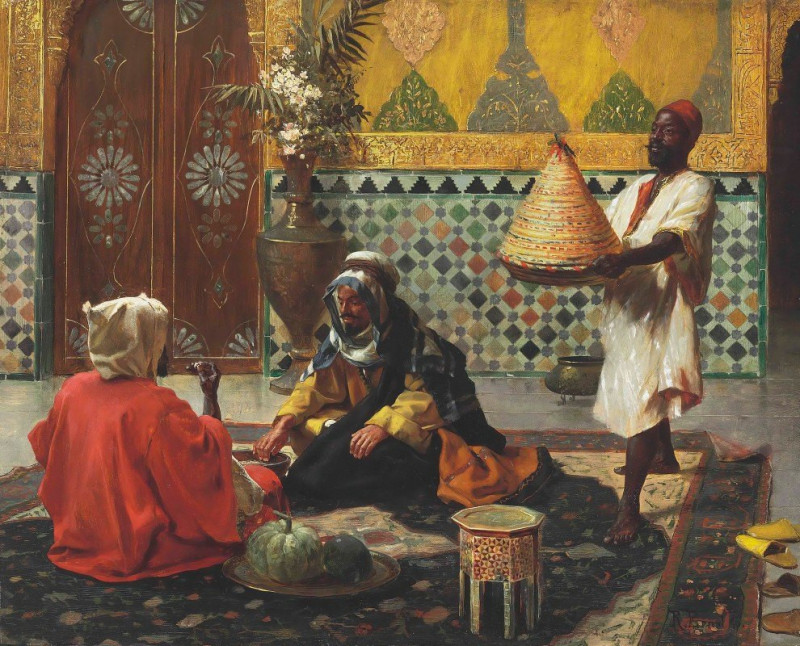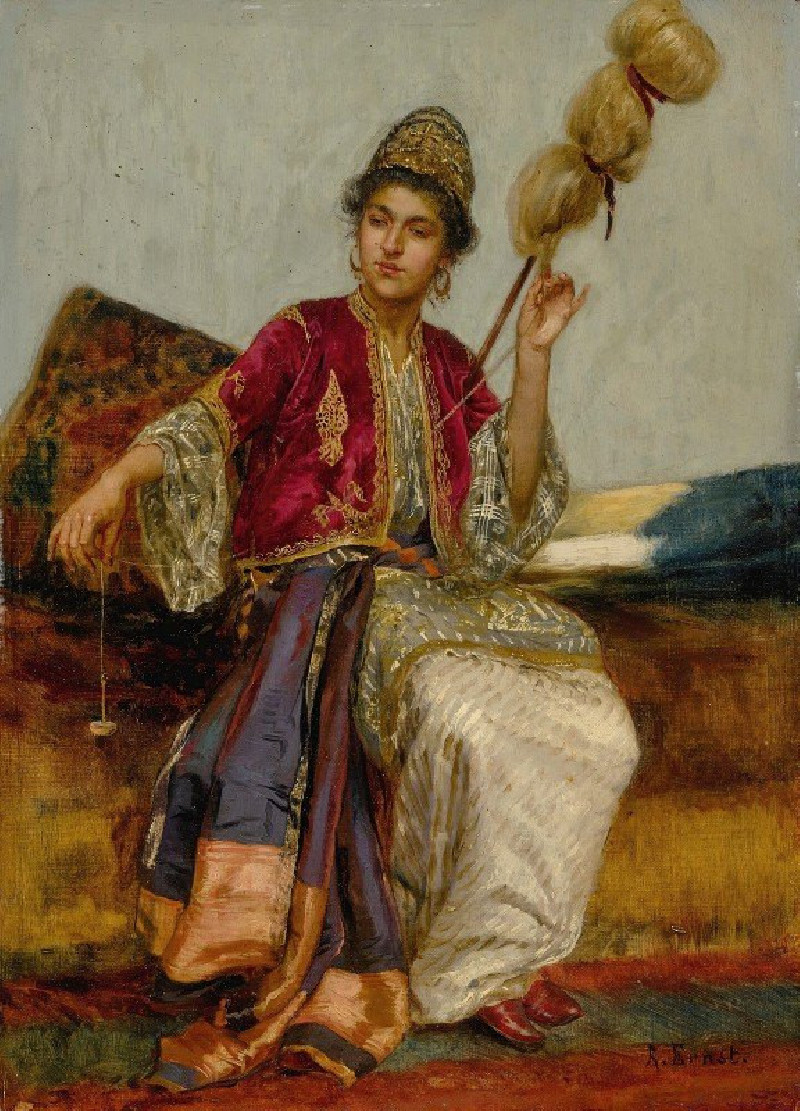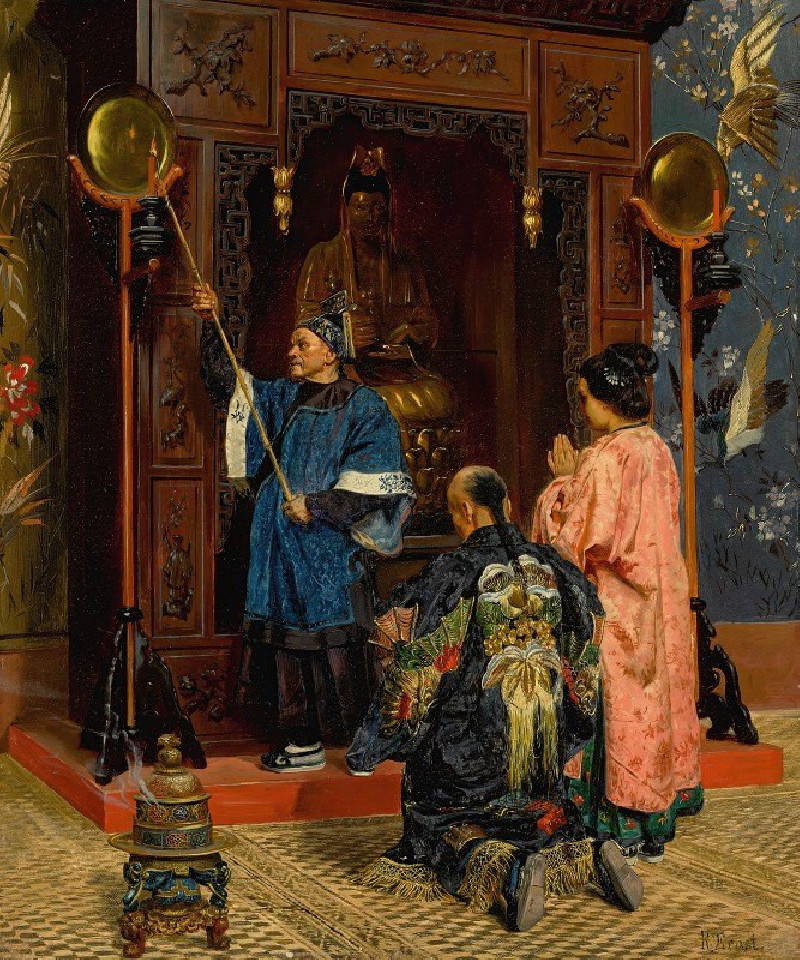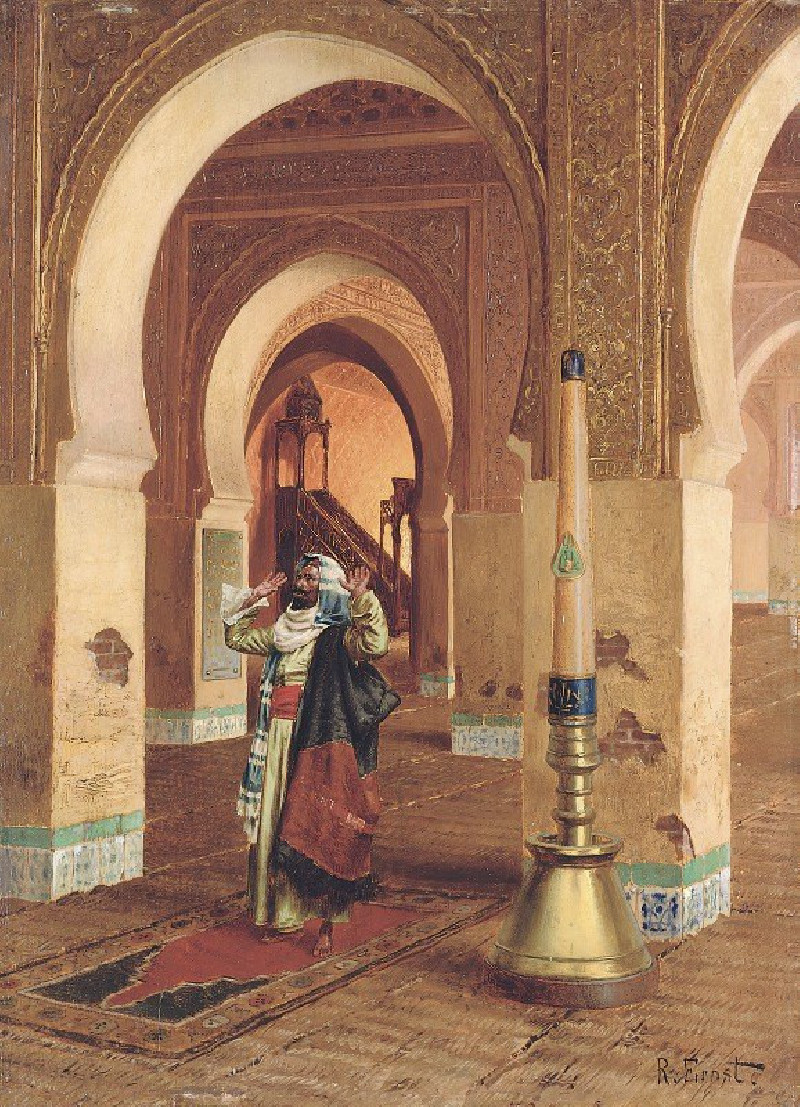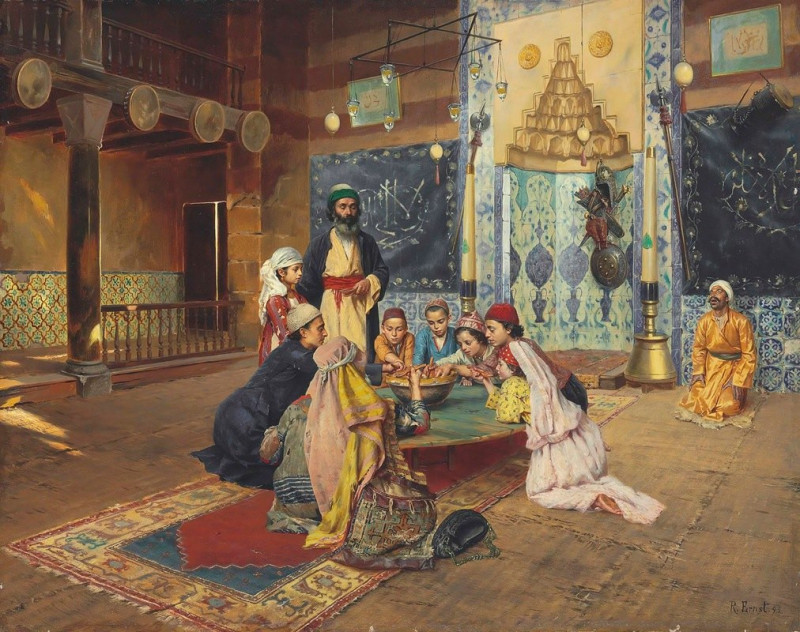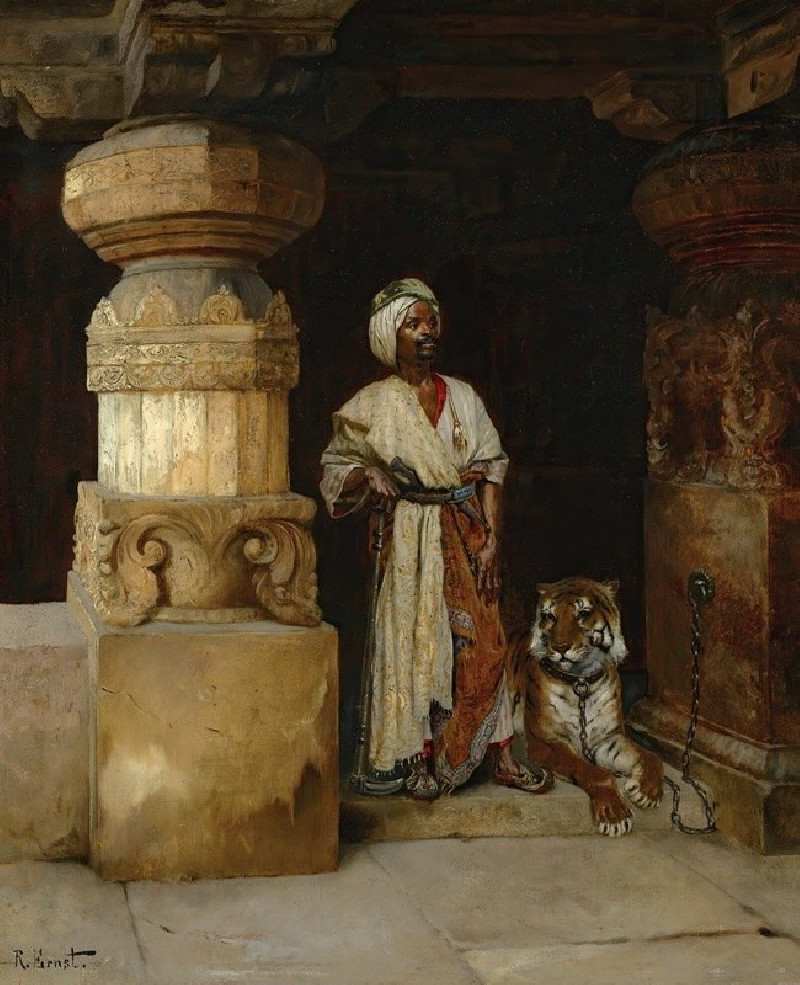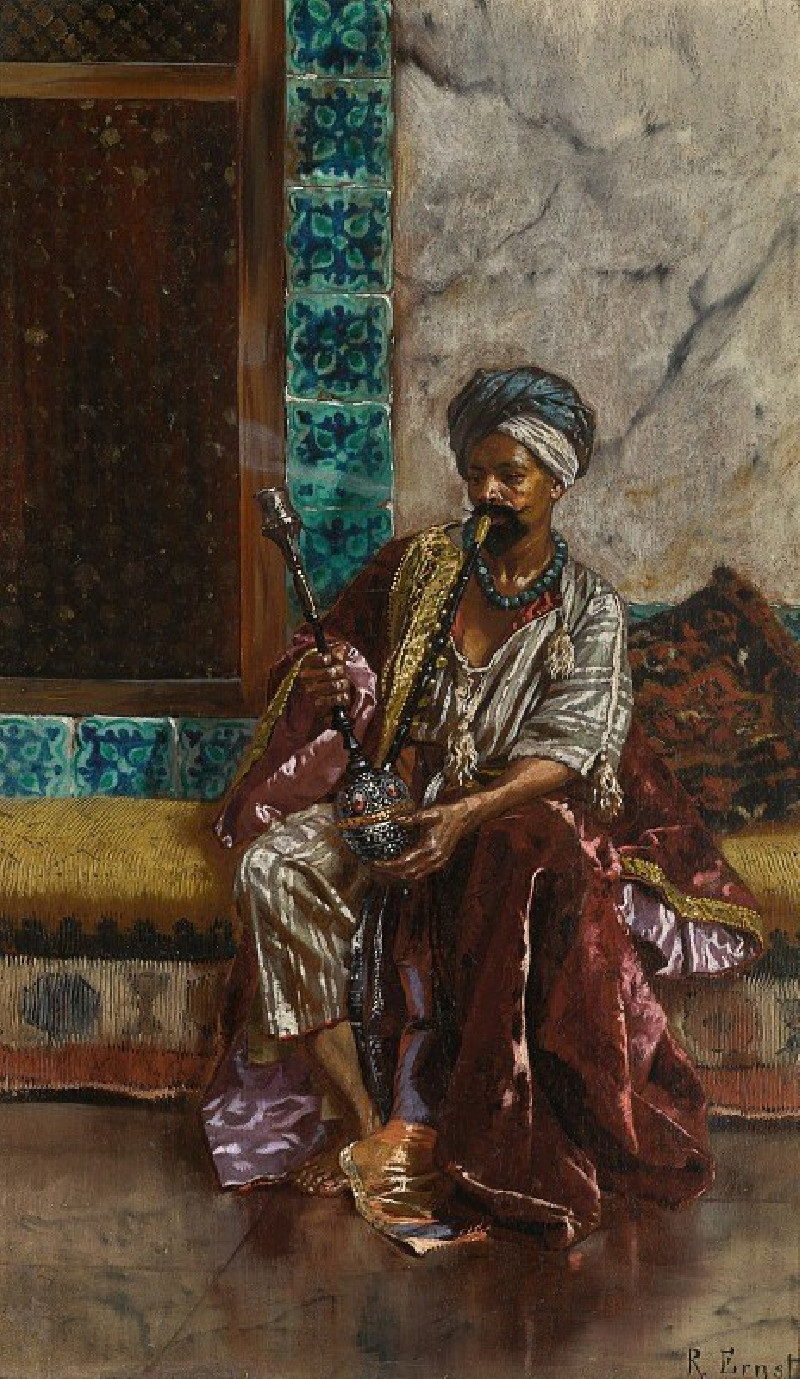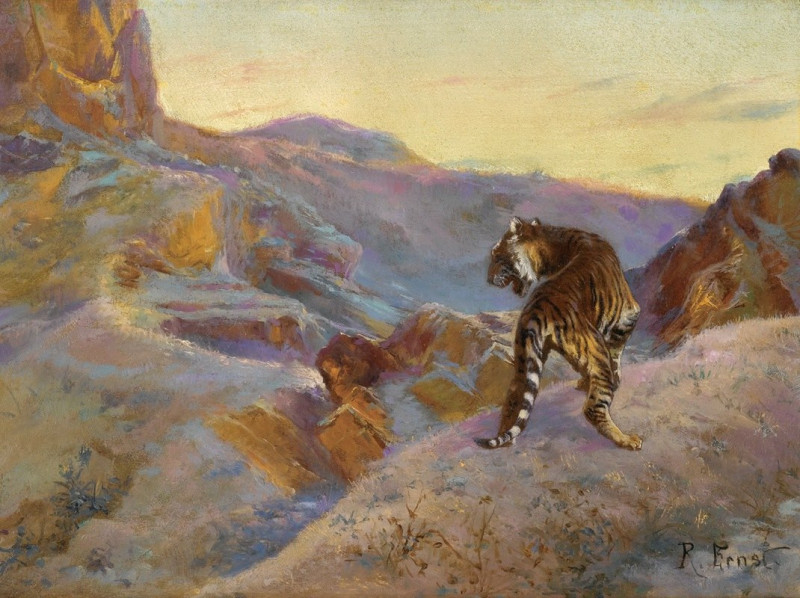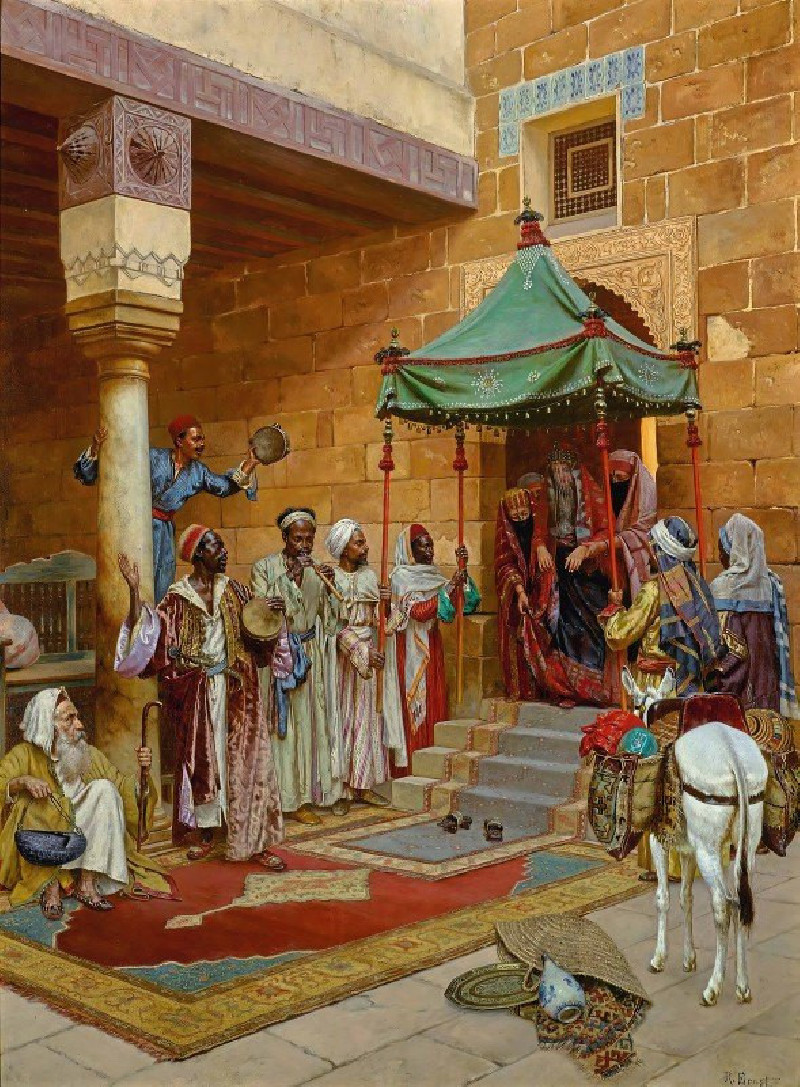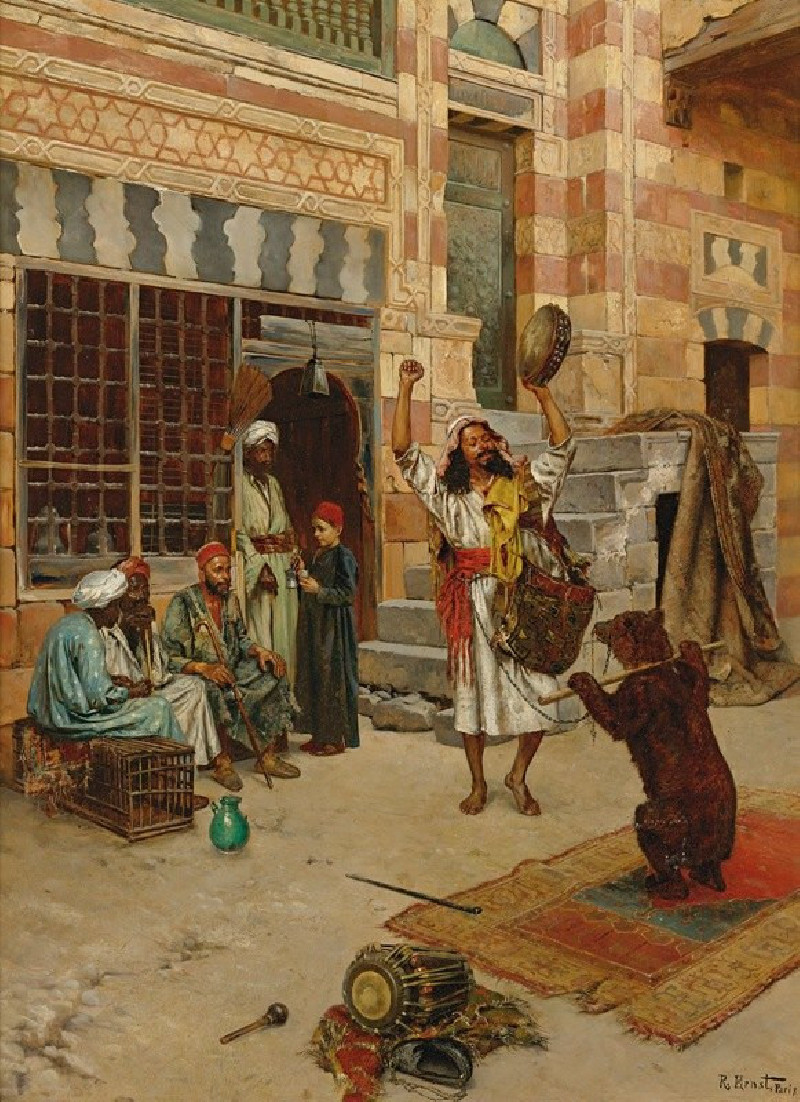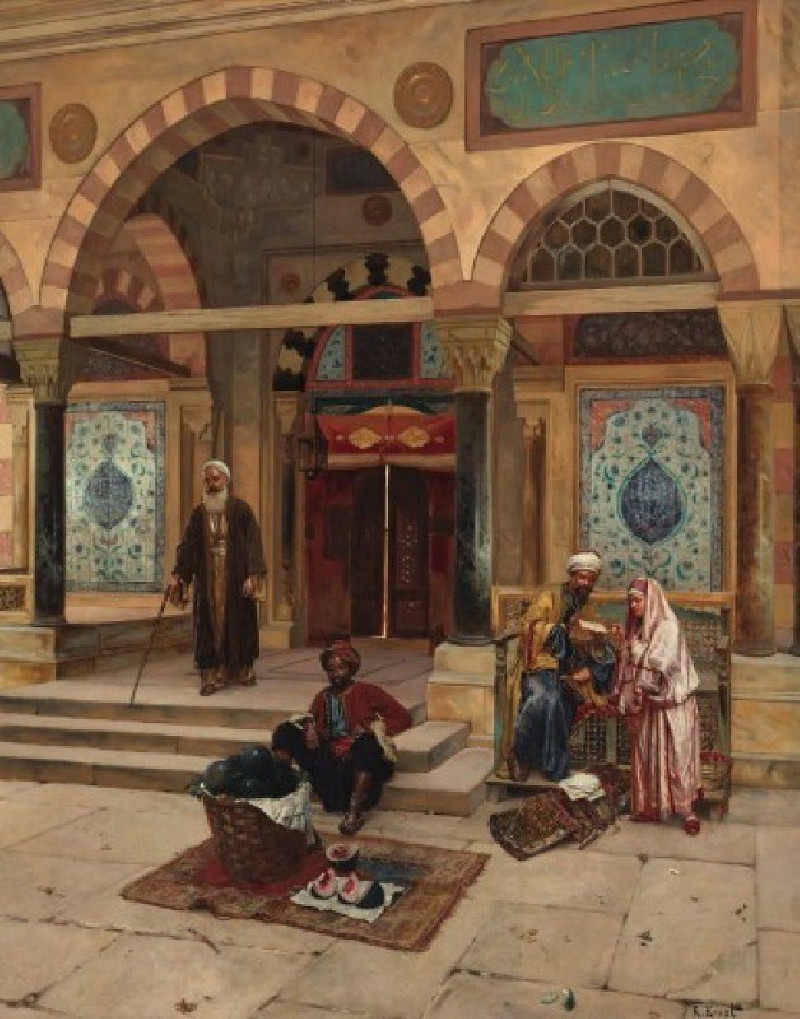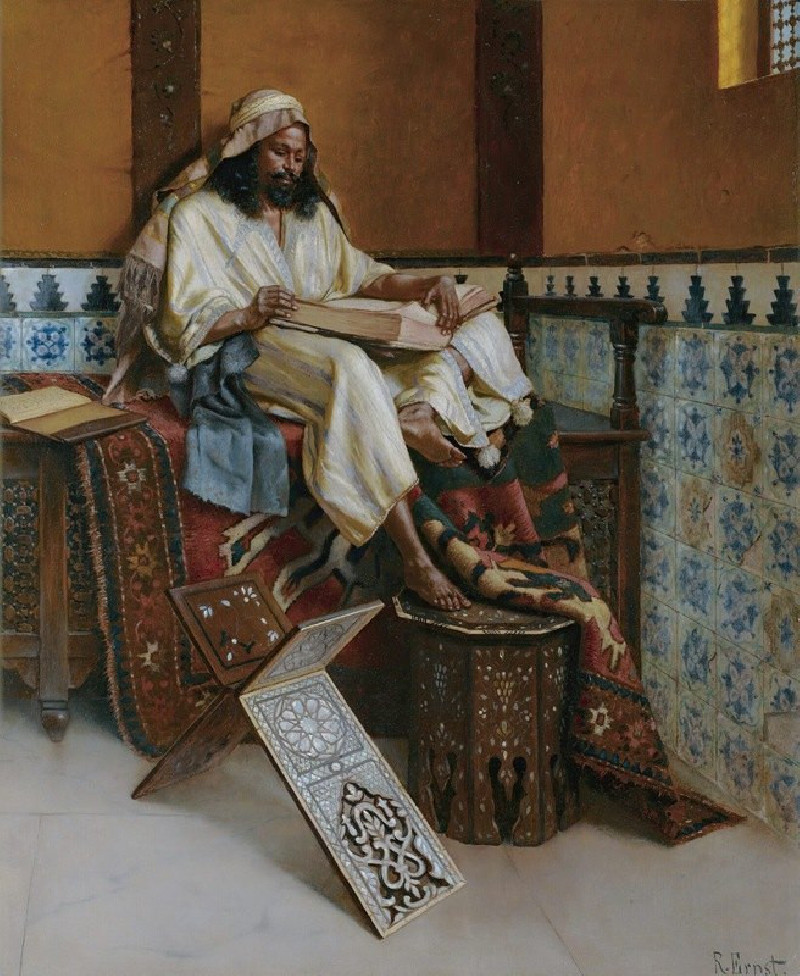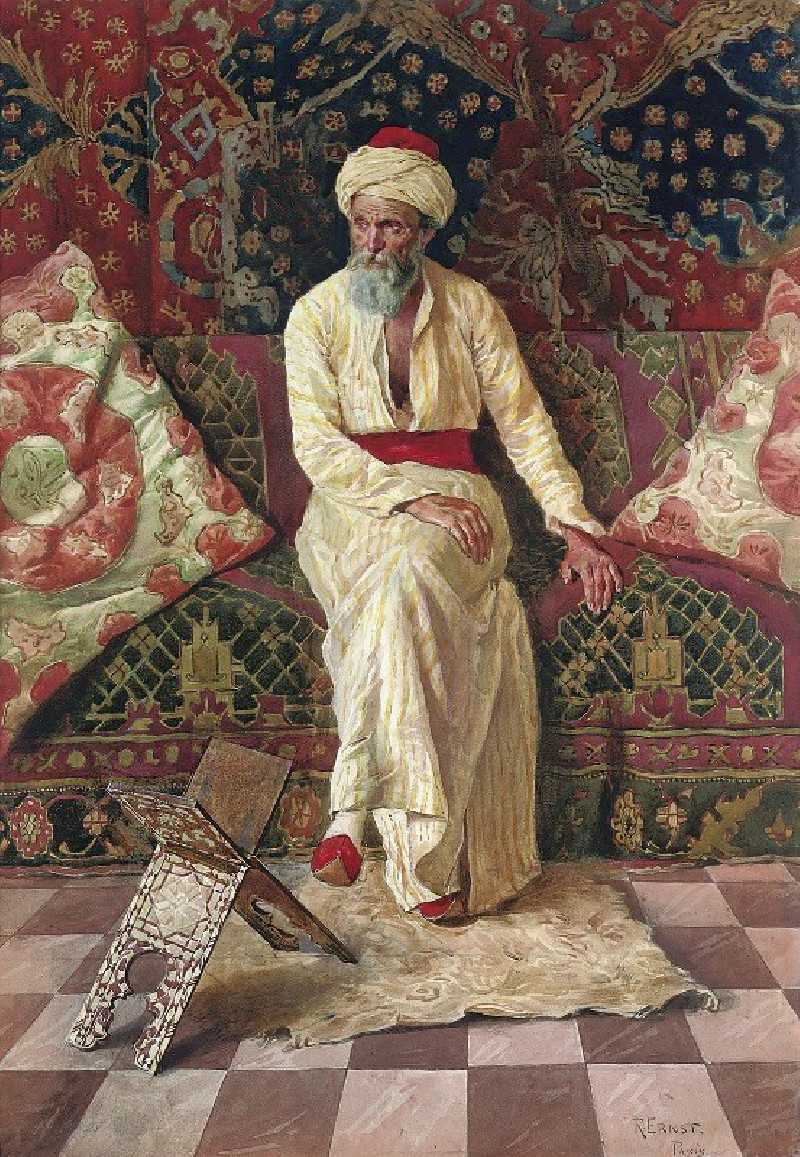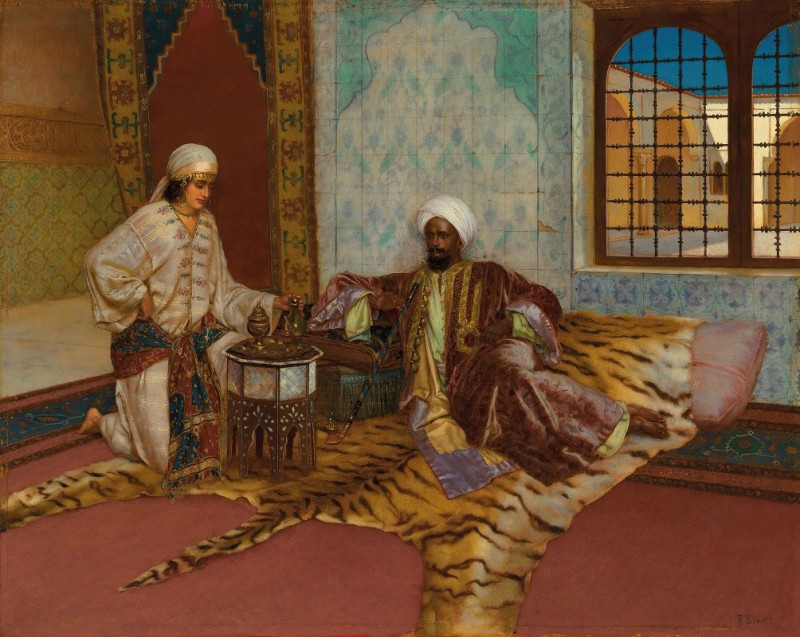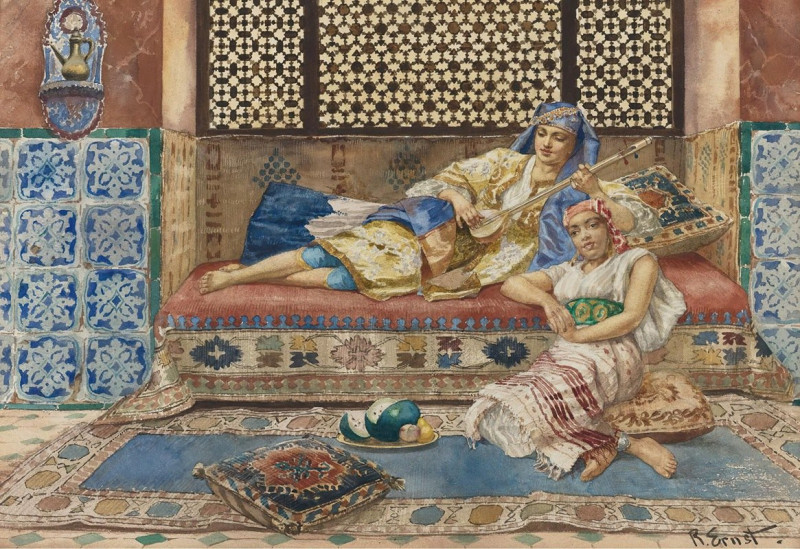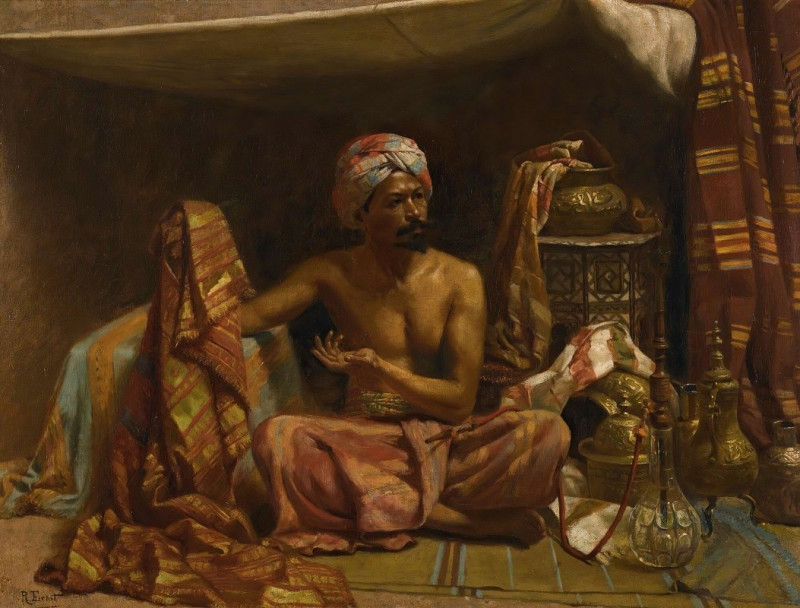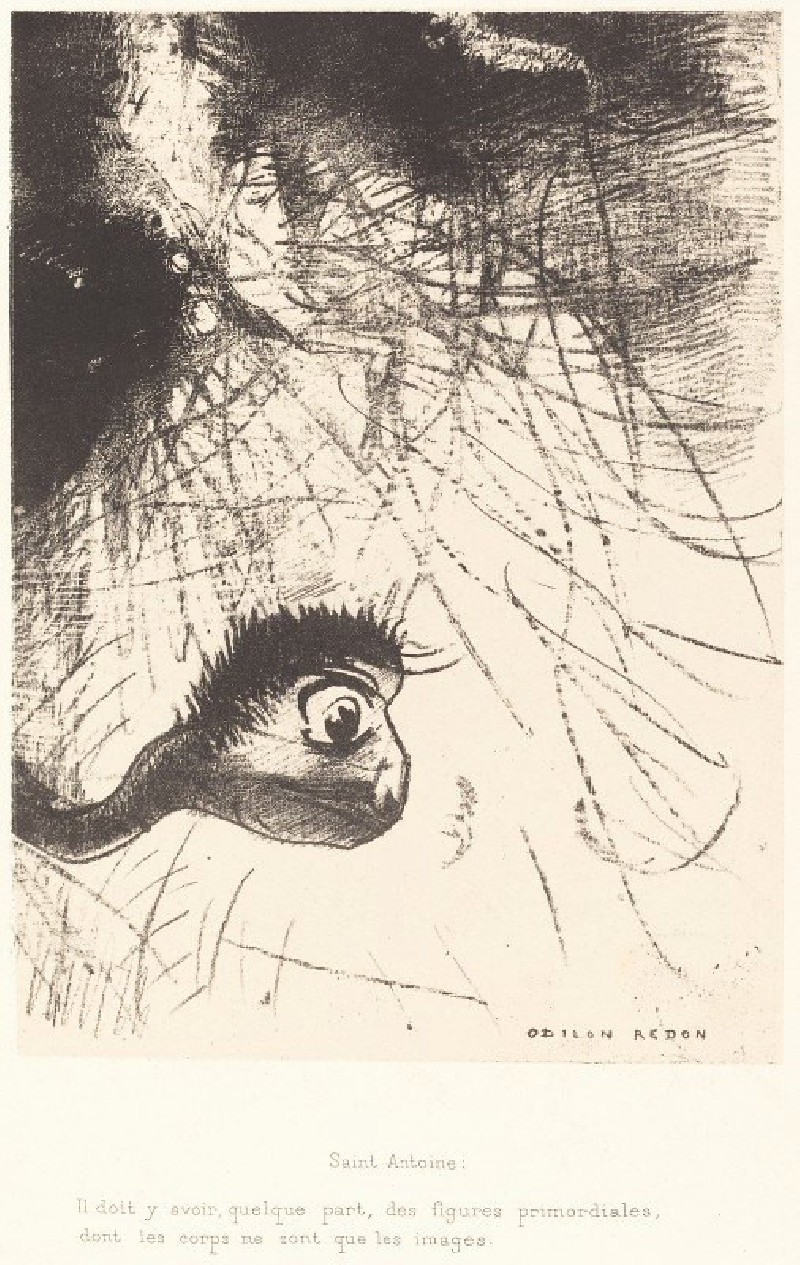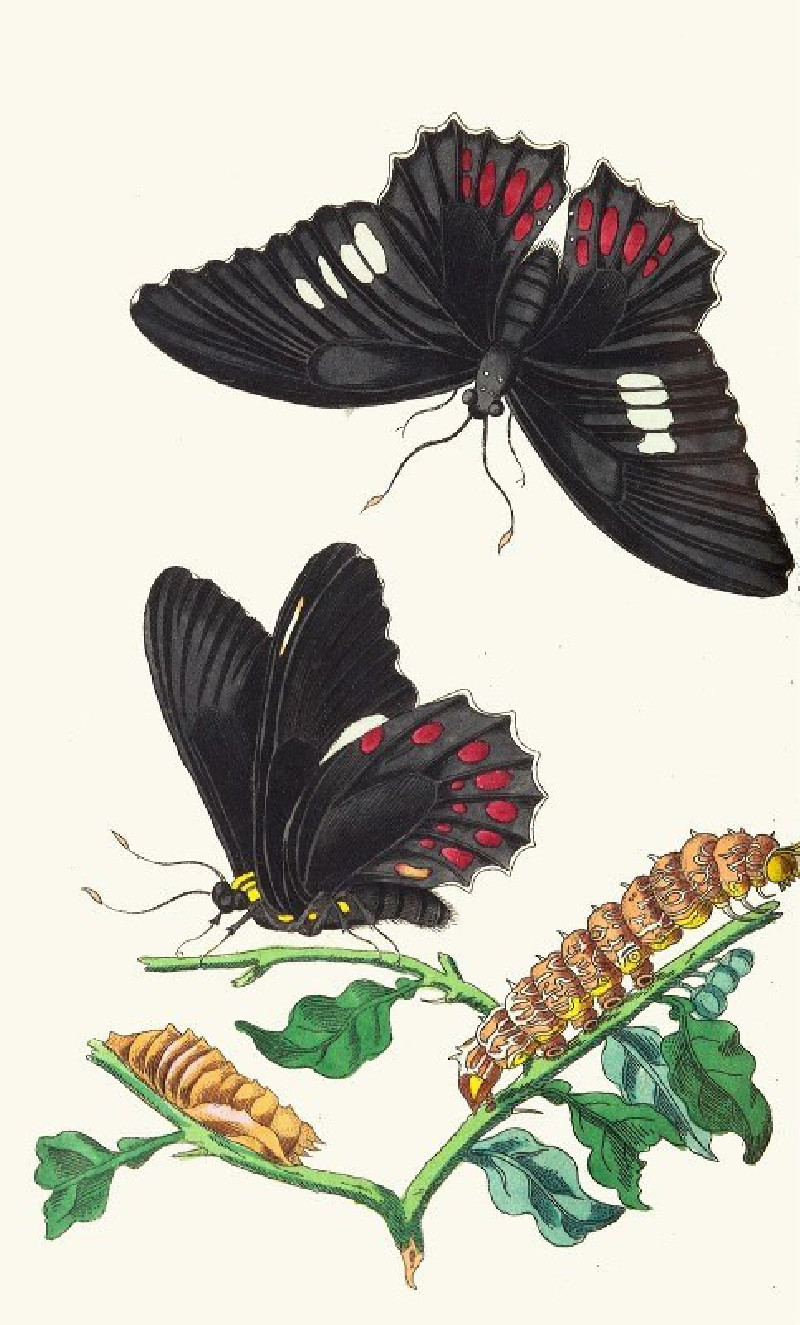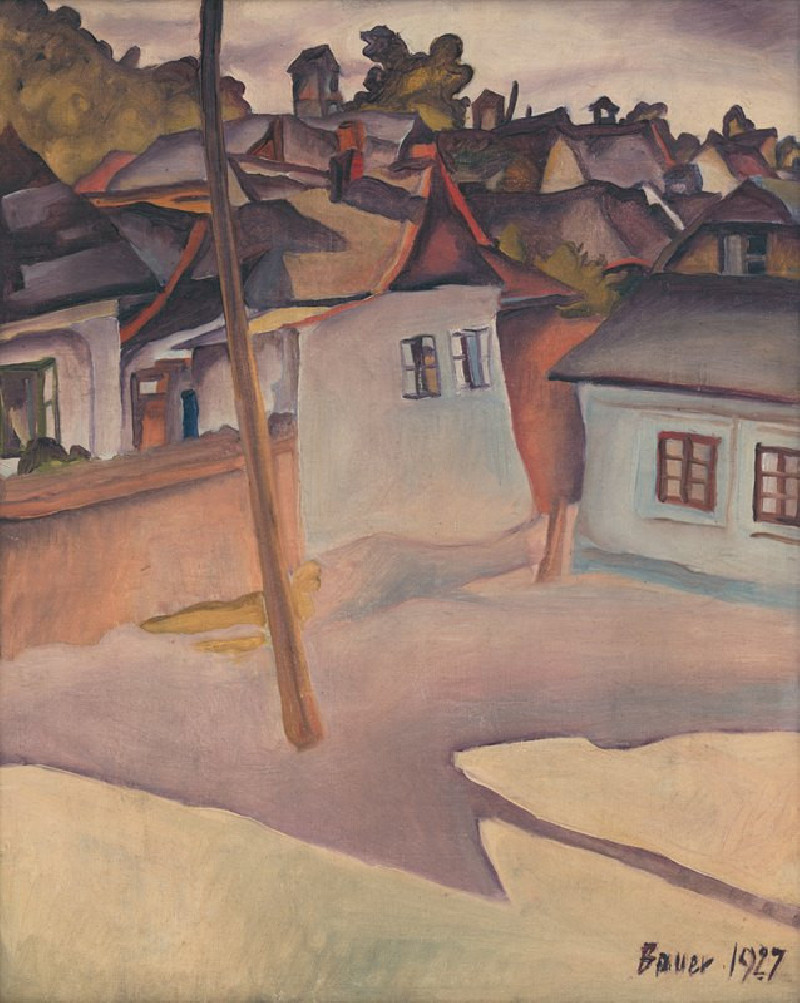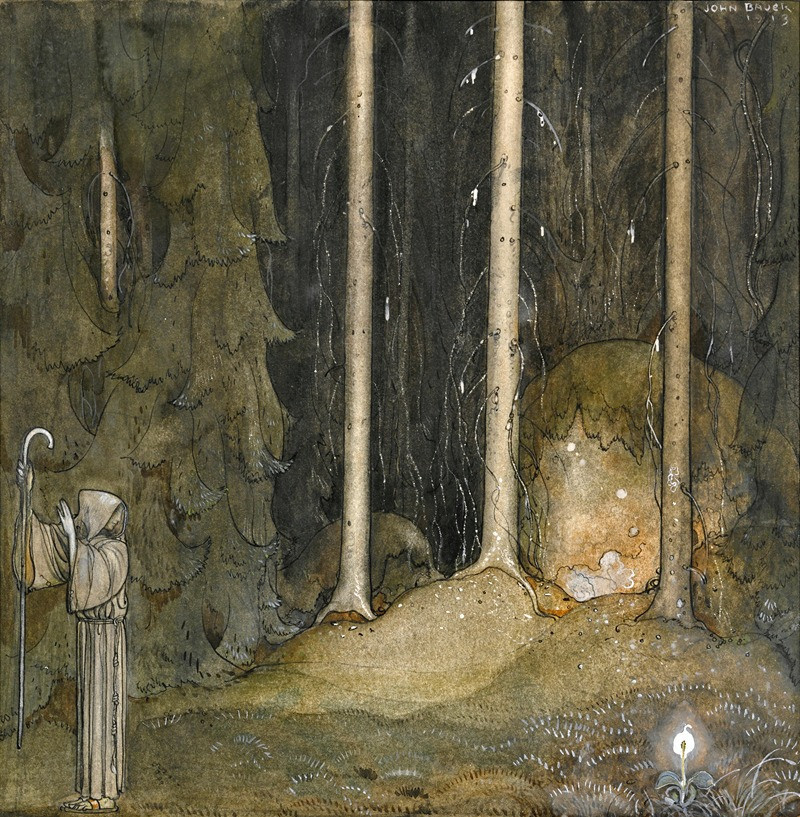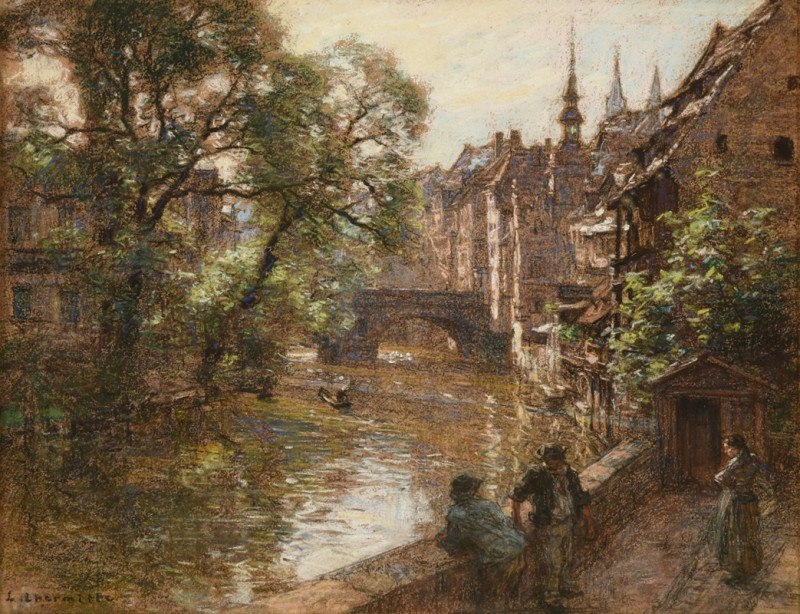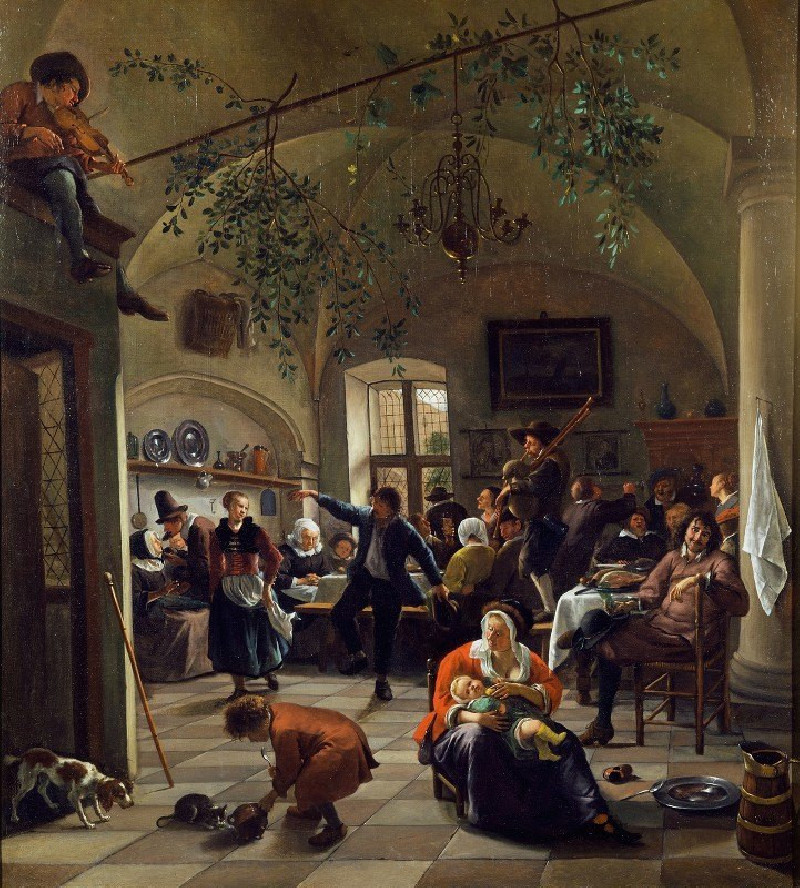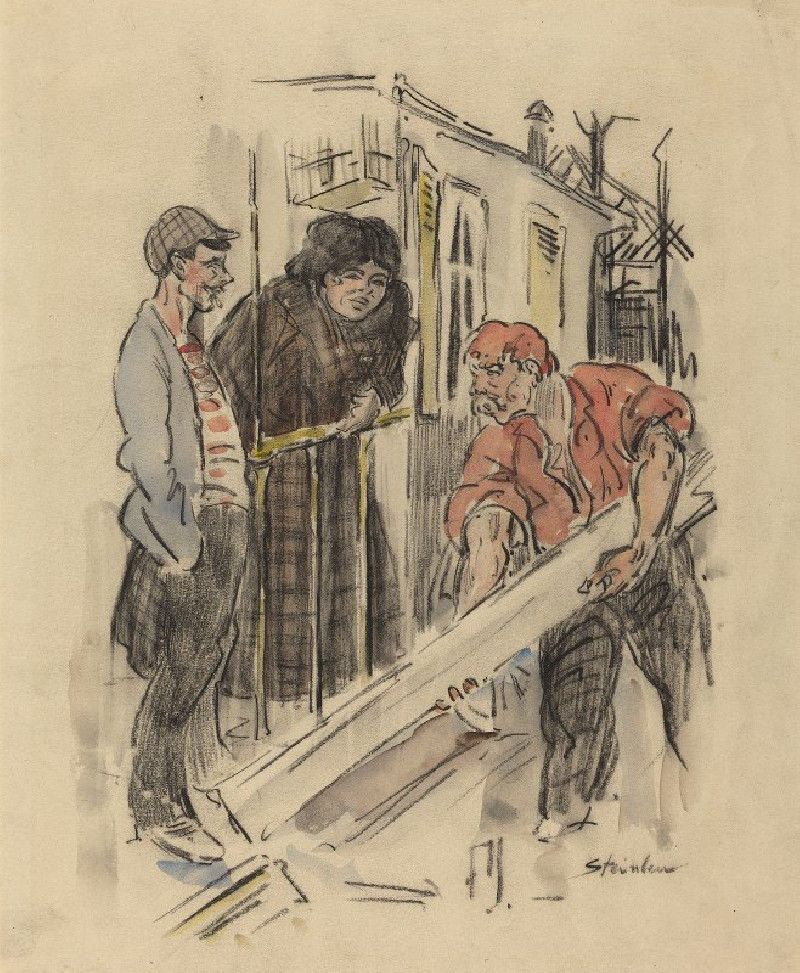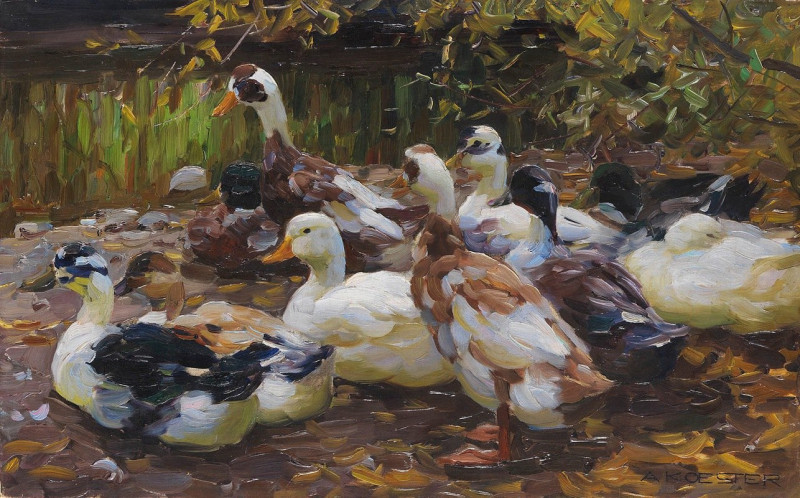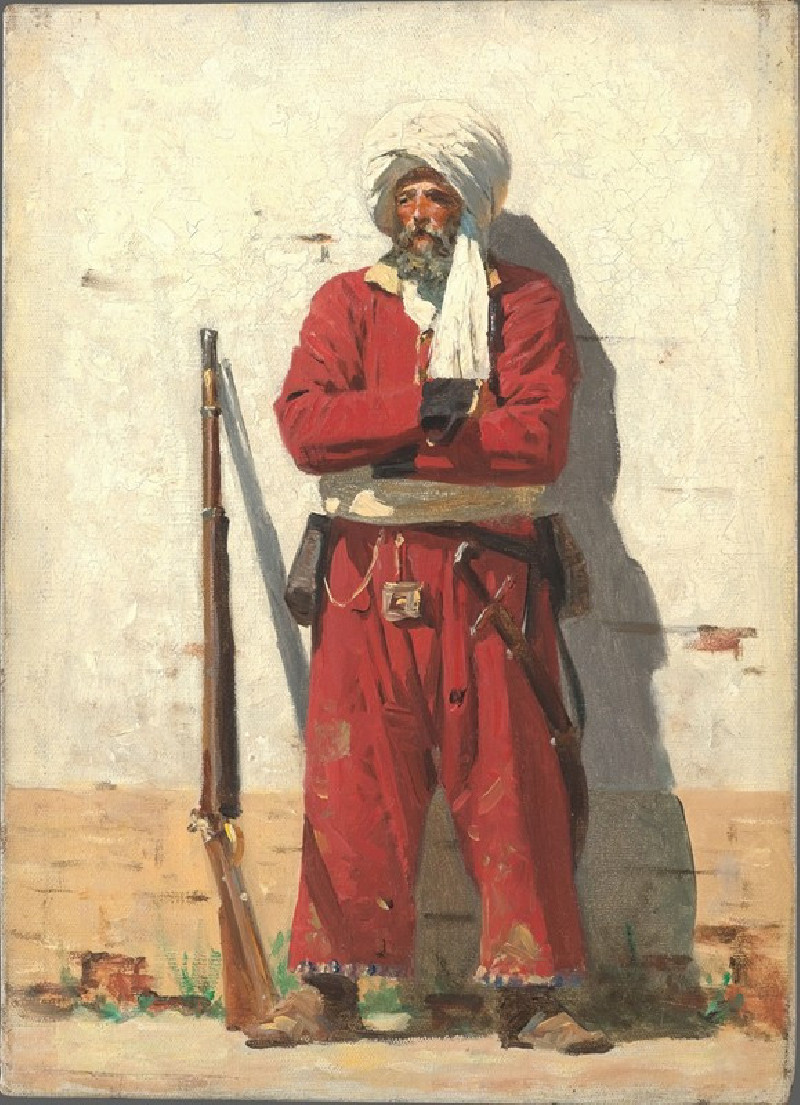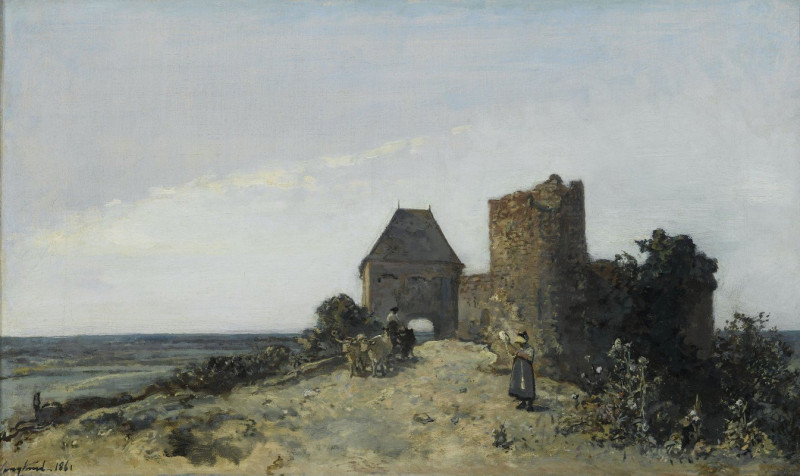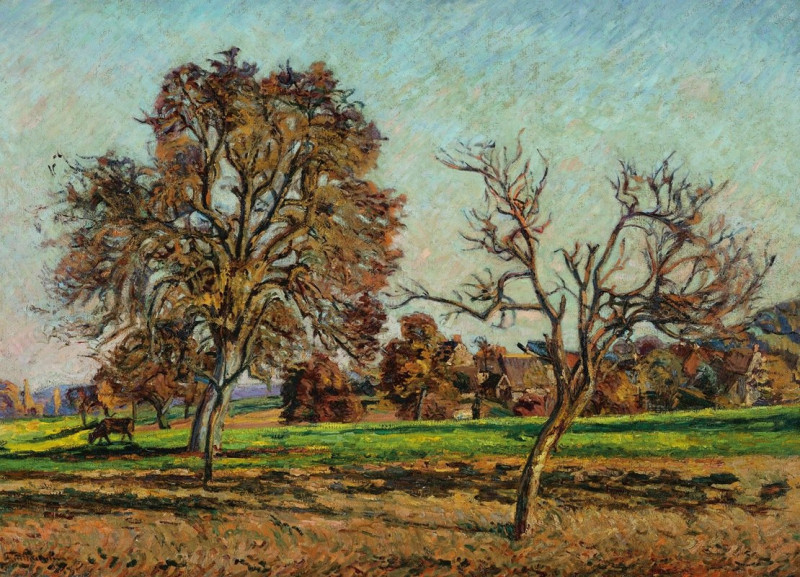The Watering Hole
Technique: Giclée quality print
Recommended by our customers
More about this artwork
"The Watering Hole" by Rudolf Ernst is a striking example of Orientalist painting that captures a serene moment with rich detail and color. This painting situates the viewer in a sunlit courtyard, where a figure on a majestic white horse pauses near an aged tree with gnarled roots. The man, adorned in a flowing robe with vibrant reds and whites, sits confidently atop his mount, suggesting a moment of rest or contemplation.Ernst's meticulous attention to texture and light is evident in every aspect of the composition—from the intricate details of the rider's attire and the horse's shiny coat to the textured walls and rustic ambiance of the surroundings. The presence of green foliage peeking through the branches adds a touch of life to the otherwise dusty, sunbathed setting.This artwork not only showcases Ernst's skill as a painter but also reflects his fascination with North African and Middle Eastern cultures, which he observed during his travels.
Delivery
Returns
Rudolf Ernst was an Austro-French painter, printmaker and ceramics painter who is best known for his orientalist motifs. He exhibited in Paris under the name "Rodolphe Ernst".
He was the son of the architect Leopold Ernst and, encouraged by his father, began studies at the Academy of Fine Arts Vienna at the age of fifteen. He spent some time in Rome, copying the old masters, and continued his lessons in Vienna with August Eisenmenger and Anselm Feuerbach.

